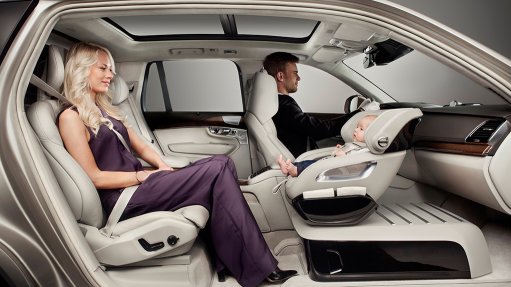
FOCUSED ON SAFETY A safe, rearward-facing seating position enables a child to keep eye contact with either the driver or the rear passenger
With the launch of a new child seat concept, Swedish vehicle manufacturer Volvo Cars’ design team has completely reimagined how children can travel safely in the future.
Volvo’s XC90 Excellence and Lounge Console Concept – upon which the child seat was built – was revealed at the Shanghai Auto Show in April, marking what the company dubs “a bold and luxurious step forward”.
“We started by asking ourselves if we could make life easier for parents and safer for their children when it comes to the child seat experience,” says Volvo Cars concept and monitoring centre chief designer of interiors Tisha Johnson.
She adds that Volvo focused on three key benefits, including making it easier to get the child into and out of the child seat from an ergonomic and comfort perspective, providing the child with a safe, rearward-facing seating position that enables it to keep eye contact with either the driver or the rear passenger and including enough storage for vital child accessories, such as diapers, bottles and wipes.
Johnson says the child-seat concept originated from a conversation with Volvo Cars’ owner Li Shufu, when he reviewed the XC90 Excellence Lounge Console Concept earlier this year and thought about how else the space left by removing a front passenger seat could be used.
The resulting concept enables the parent to swivel the seat counterclockwise when seating the child and then lock the seat in a rearward-facing position. The Excellence Child Seat Concept also provides a function to help small children safely lean back and sleep.
The concept dovetails with Volvo’s clear position on safety – that small children should travel in a rearward-facing position for as long as possible, at least up to the age of three or four.
This is primarily owing to the lack of muscular strength in the necks of small children and the disproportionate head size and weight of a child in relation to his or her body.
Johnson adds that these types of alternative seating arrangements will become increasingly import-ant as the automotive industry moves towards manufacturing autonomous vehicles.